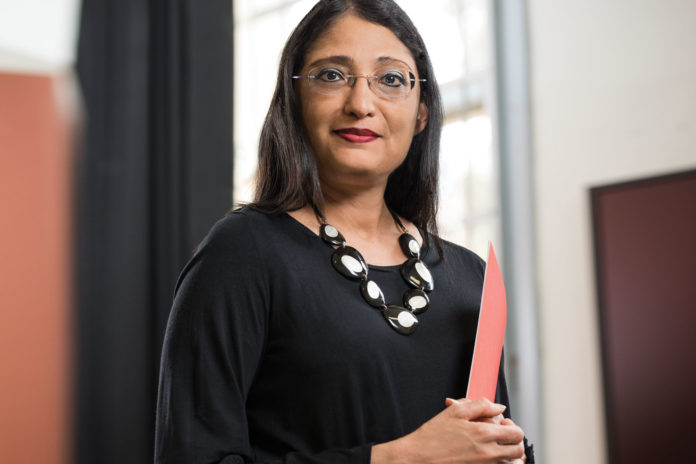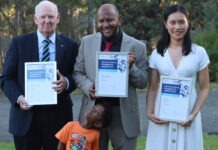Having missed out on studying medicine at the university of her choice in India, Associate Professor Bandana Saini MPS thought she’d study pharmacy for ‘just a year’ while waiting to re-sit the medicine exams. More than two decades later, she’s a leading lecturer, researcher and asthma educator.
How did you find yourself in your current role at the University of Sydney?
I first studied pharmacy in India then came to Australia and completed an MBA.
I was about to return to India when I walked into the University of Sydney and thought, ‘I should see how pharmacy is taught here’. The then-Dean introduced me to a professor who asked, ‘If you were doing research, what would you do it in?’ I replied, ‘Asthma management’. And she said, ‘You’re on!’ That was 1997. I haven’t looked back.
What have you learned along the way?
My PhD focused on developing an asthma management model for community pharmacies. So I first had to learn a lot about community pharmacy because my original training had been very science and pharmaceutics-focused.
I had to register in Australia as a pharmacist and spent a lot of time in community pharmacies, which I loved. I got a lot of enjoyment talking to patients and listening to their stories.
Also, having asthma myself, I’ve realised I have a lot of personal motivation to work in this area.
What are your biggest challenges?
With teaching, you need a lot of passion. You also need a little bit of showmanship to engage pharmacy students not just in the lecture, but with the profession.
With research, the challenge is to make sure that, before I retire, respiratory disease management and my other research field, sleep, are remunerated parts of pharmacy services.
What’s the most satisfying part of your role?
If I go into a pharmacy almost anywhere in NSW, there’s a good chance someone will walk out and say, ‘Oh, Bandana, how are you?’
It’s very fulfilling to see people you’ve trained who are now professionals.
Where do you see yourself in 10 years?
I’d still like to be at the university because I really am passionate about teaching and research. But I want to take a bigger leadership role in terms of developing pharmacy services.
So far I’ve been a lone researcher. I do a project, get great results, publish it, publicise it and let the pharmacy profession know. But there’s a gap between that and actually making it happen. And that’s what I want to focus on.
What’s your plan to make that happen?
I’ll have to work with people outside pharmacy, people who are health policy experts.
I’ll learn and work with them towards making sure that there’s a channel for paying pharmacists for services they currently provide for free – in my case, asthma and sleep.
A typical day for Associate Professor Bandana Saini MPS, an Asthma Educator
| 8am | General preparation of respiratory kit. Prepare patient record file, print asthma education materials and action plans. |
| 9am | Arrive at pharmacy one to two hours before appointment. Check list of patient appointments. Request dispensed medication history and review asthma medications, as well as any notes from pharmacist. |
| 10am | Check which inhalers patient is using and prepare demonstration devices. Check who the patient’s GP or specialist is. Check with pharmacist for other issues. |
| 10.30am | Set up area for patient appointment. Ensure patient files, spirometer, lung models and dispensed medication history are ready. |
| 11am- 11.45am |
Introduce myself to patients, make them comfortable, obtain patient consent, interview patient, conduct lung function test, inhaler check, vaccination status and action plan ownership checks. |
| 11.45am- 12.15pm |
Go through three-step inhaler education plan, including patient demonstrating, giving a demonstration myself, and then getting the patient to demonstrate again correctly. |
| 12.45pm- 1pm |
Explain action plan to patient. End interview with goals the patient would like to set. Discuss what I’ll recommend to their doctor and provide a copy of referral letter to them. |
| 1pm- 1.30pm |
Complete documentation and send referral to GP. Make next pharmacy appointment for patient. Debrief pharmacist. Ensure patient notes are confidentially secured with pharmacy. |
FURTHER RESOURCES
Want to find out more about different career pathways for pharmacists?
Visit psa.org.au/careerpathways



 Professor Margie Danchin[/caption]
Professor Margie Danchin[/caption]

 Dr Peter Tenni[/caption]
Dr Peter Tenni[/caption]
 How should we deprescribe gabapentinoids, according to the Maudsley Deprescribing Guidelines[/caption]
How should we deprescribe gabapentinoids, according to the Maudsley Deprescribing Guidelines[/caption]



 Pharmacists have always prescribed, but they have the potential to prescribe much more
Pharmacists have always prescribed, but they have the potential to prescribe much more






